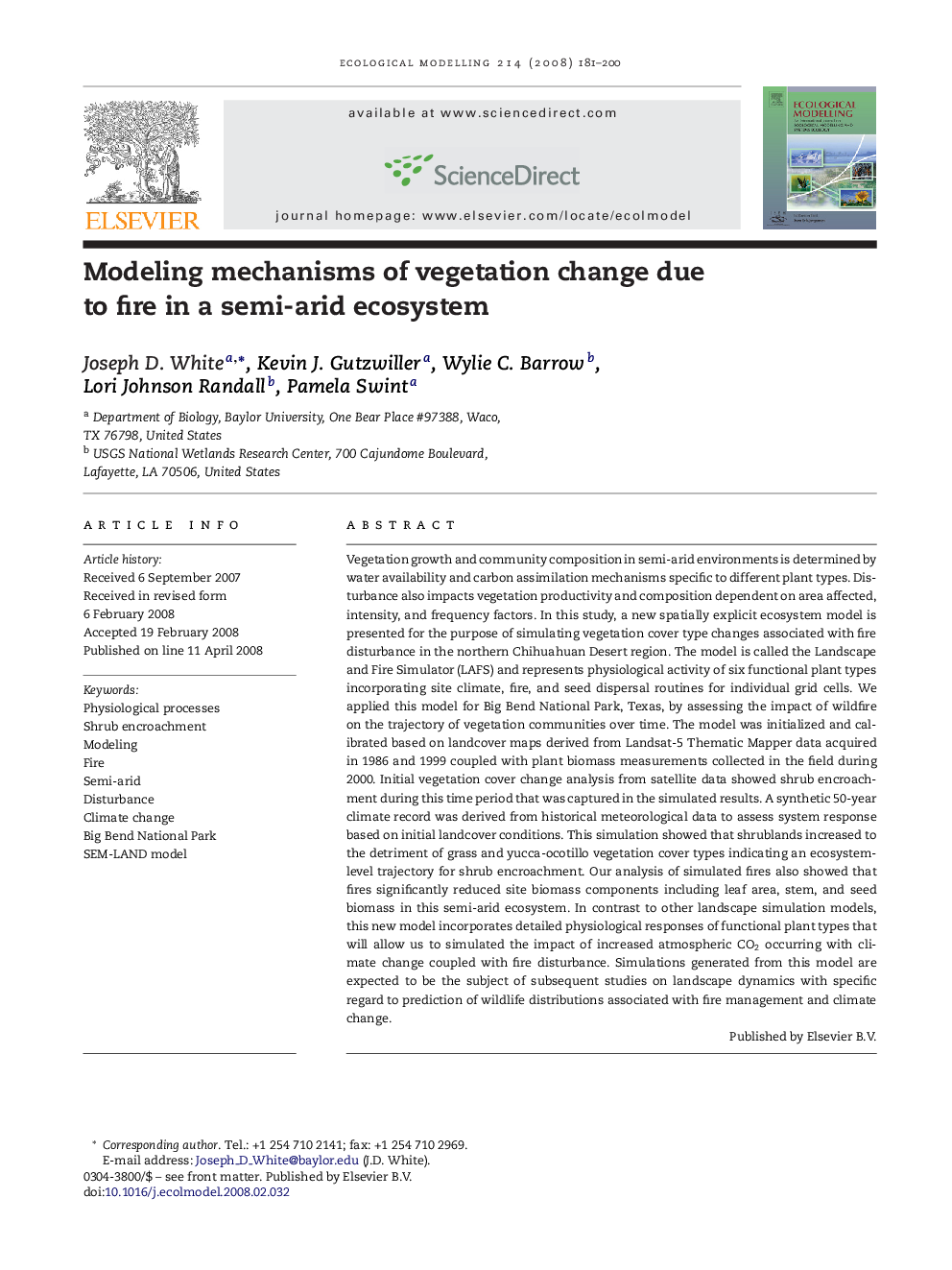| کد مقاله | کد نشریه | سال انتشار | مقاله انگلیسی | نسخه تمام متن |
|---|---|---|---|---|
| 4378164 | 1617533 | 2008 | 20 صفحه PDF | دانلود رایگان |

Vegetation growth and community composition in semi-arid environments is determined by water availability and carbon assimilation mechanisms specific to different plant types. Disturbance also impacts vegetation productivity and composition dependent on area affected, intensity, and frequency factors. In this study, a new spatially explicit ecosystem model is presented for the purpose of simulating vegetation cover type changes associated with fire disturbance in the northern Chihuahuan Desert region. The model is called the Landscape and Fire Simulator (LAFS) and represents physiological activity of six functional plant types incorporating site climate, fire, and seed dispersal routines for individual grid cells. We applied this model for Big Bend National Park, Texas, by assessing the impact of wildfire on the trajectory of vegetation communities over time. The model was initialized and calibrated based on landcover maps derived from Landsat-5 Thematic Mapper data acquired in 1986 and 1999 coupled with plant biomass measurements collected in the field during 2000. Initial vegetation cover change analysis from satellite data showed shrub encroachment during this time period that was captured in the simulated results. A synthetic 50-year climate record was derived from historical meteorological data to assess system response based on initial landcover conditions. This simulation showed that shrublands increased to the detriment of grass and yucca-ocotillo vegetation cover types indicating an ecosystem-level trajectory for shrub encroachment. Our analysis of simulated fires also showed that fires significantly reduced site biomass components including leaf area, stem, and seed biomass in this semi-arid ecosystem. In contrast to other landscape simulation models, this new model incorporates detailed physiological responses of functional plant types that will allow us to simulated the impact of increased atmospheric CO2 occurring with climate change coupled with fire disturbance. Simulations generated from this model are expected to be the subject of subsequent studies on landscape dynamics with specific regard to prediction of wildlife distributions associated with fire management and climate change.
Journal: Ecological Modelling - Volume 214, Issues 2–4, 24 June 2008, Pages 181–200